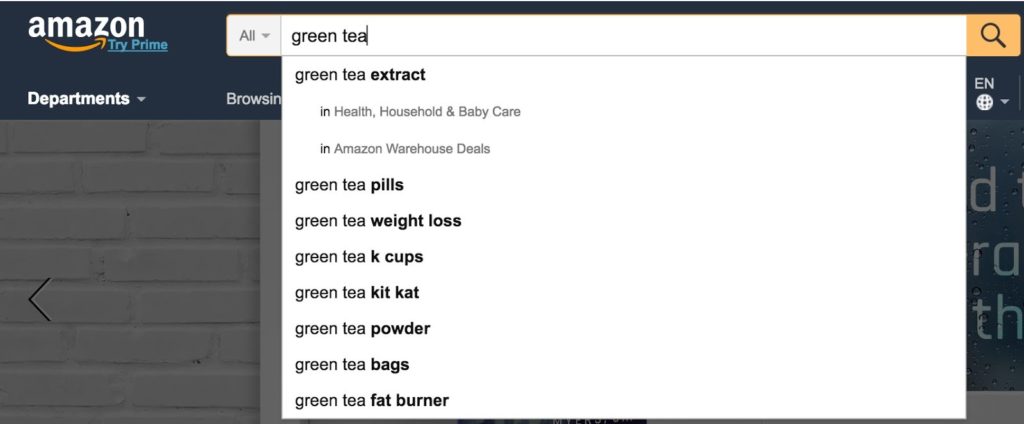4 Powerful SEO Strategies for Online Retailers
Focus on long-tail terms where you’ll face less competition and cater to Google’s love for deep content.

As an e-commerce seller, you probably know that search traffic is massively important to your website. After all, when people are searching for a product, it usually means they are interested in buying it. No traffic means no sales.
But Google won’t automatically send search traffic your way. They only send it to sites that understand how they work and optimize their sites accordingly.
In this post, I’m going to give you 4 powerful search engine optimization (SEO) strategies for increasing the search traffic coming to your site.
Step #1: Research Your Long-Tail Keywords
The first step in e-commerce SEO success is in-depth keyword research. By spending time diving into keywords, you can identify what your customers are searching for, as well as how you rank against your competitors.
Your best bet is to research long-tail keywords. Long-tail keywords are typically three- to four-word phrases that people are searching for, as opposed to primary keywords, which tend to be one- or two-word searches.
“Green tea,” is a primary keyword. “Benefits of drinking green tea,” is a long-tail keyword.
Why long-tail keywords? Because it’s really tough to rank on the first page of Google for primary keywords. It’s going to be really hard for you to get on the first page of Google for the phrase “green tea” because so many people are competing for that keyword.
When I look at the term using Google Keyword Planner, I can see that the competition is very high, meaning the odds of me ranking are pretty slim.

However, when I search for “japanese tea”, I see that the competition is lower. Yes, the search volume is also lower, but in the end I’ll receive far more visits from this type of search by ranking high in organic results.

The point is this: when creating your e-commerce pages, you want to build them around long-tail keywords. Ideally these keywords get at least 500 searches per month and are of medium competition difficulty.
Also, your keyword should fit your business. If Japanese tea is totally unrelated to your products, it’s probably not a great keyword to utilize.
If you’re having trouble finding long-tail keywords, try Amazon. The Amazon search bar will suggest a ton of words you may not have considered before.

Step #2: Optimize Your Pages Around Your Keywords
Once you’ve identified your long-tail keywords, you need to optimize your e-commerce pages around those keywords.
There are a number of ways you can do this.
First, use short URLs. Google seems to prefer short URLs over long ones when returning search results. So, rather calling your page www.yourstore.com/the-best-green-tea-bags-ever, simply go with www.yourstore.com/green-tea
Second, try to make your product pages at least 1,000 words long. Google also seems to prefer longer content when returning search results. If you’re having trouble coming up with 1,000 words, consider adding:
- Liberal descriptions
- Possible uses
- Quotes from satisfied customers
Your goal is to give Google as much content to draw upon as possible. This increases the likelihood of your page getting pulled in search results.
Third, sprinkle your keywords carefully throughout your pages. Ideally, your keywords should be included three to five times throughout each page. Be careful, however, about keyword stuffing, when you try to cram your keyword in as many times as possible. Google penalizes this tactic.
Fourth, add internal links. If you have a high-authority page that gets a lot of traffic and has been linked to many times, link from that page to your important product pages.
Step #3: Create Content Around Your Products
After creating optimized product pages, you’re going to want to create great site content around those pages. Ideally, this will come in the form of starting a company blog and posting useful articles on your site that will generate significant search traffic.
Returning again to the green tea example, you could create a lengthy, in-depth guide to preparing green tea or drinking green tea. This content should be high-value content that brings in lots of readers.
Google deeply values high-value content. Their goal is to give searchers exactly what they want. If you can create that kind of content, Google will reward you with increasingly high search rankings.
One great way to create content is to solve a problem for people. For example, you could answer common challenges people face when preparing green tea. At the end of your post, you could link to one or several of your products.
Don’t skimp on this content. It’s tempting to write short posts, but Google doesn’t care much about these. Go in-depth wherever possible. For example, when I published a massive 5000+ word article about how to create a website, the post was rewarded in search results. That’s because it goes into more depth than nearly all of the existing content on the beginner topic.
Step #4: Build Links Around Your Content
Once you’ve created outstanding content, you need to market that content. Derek Halpern recommends spending 20% of your time creating content and the other 80% marketing that content.
And I’m not talking about any old marketing. I’m talking specifically about link-building.
Link-building is the process of getting other websites to link back to your content. Google sees each inbound link as a popularity vote. The more links a page has, the more important Google thinks it is and the more search traffic they send to it.
Link-building is why you need great content and not just product pages. Most people don’t want to link back to product pages, but are willing to link to great content.
There are a number of ways to build links, but some relatively straightforward ones are:
- Guest posting on other sites
- Emailing your content to site owners who are relevant to you
- Finding broken links and then offering your content as a replacement
Link-building is arguably the most effective method for increasing your website’s traffic, so don’t skimp here.
Link-building is pretty time-consuming, but it’s worth it. Google looks for high-quality incoming links and then really rewards the sites that have them.
Conclusion
The concepts behind e-commerce SEO are relatively simple, but they do take time to implement. This is time well spent. If you only rely on social media, you’ll see your traffic fall every time Facebook updates their algorithm.
Google will provide you with consistent, high-value traffic. And, more importantly, it will send people to your site who are already in a buying mood.
Article originally published on Internet Retailer





